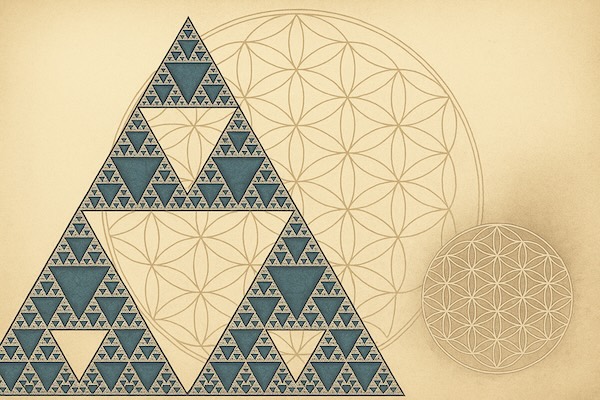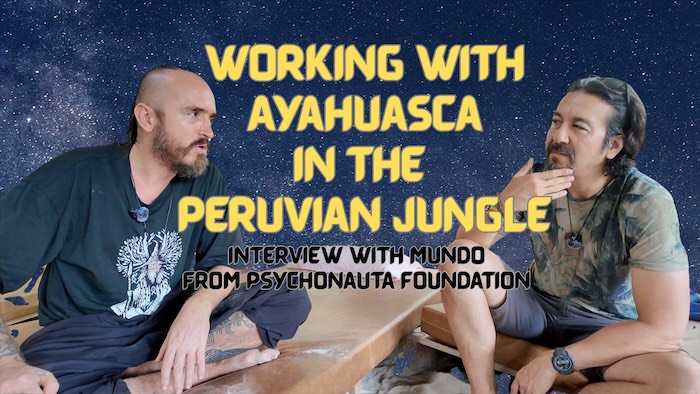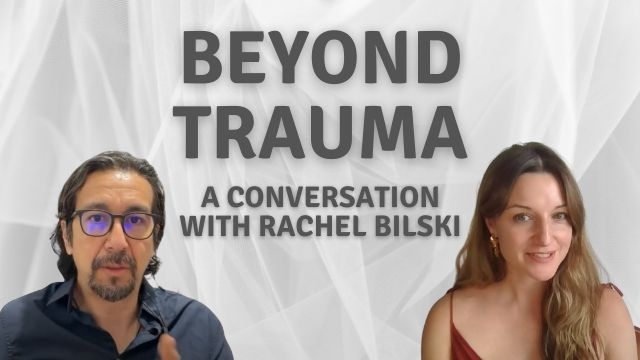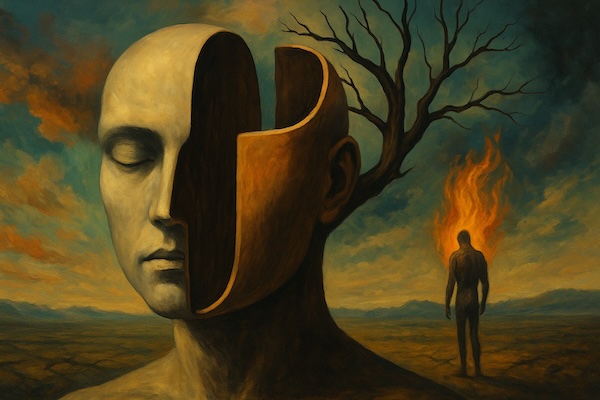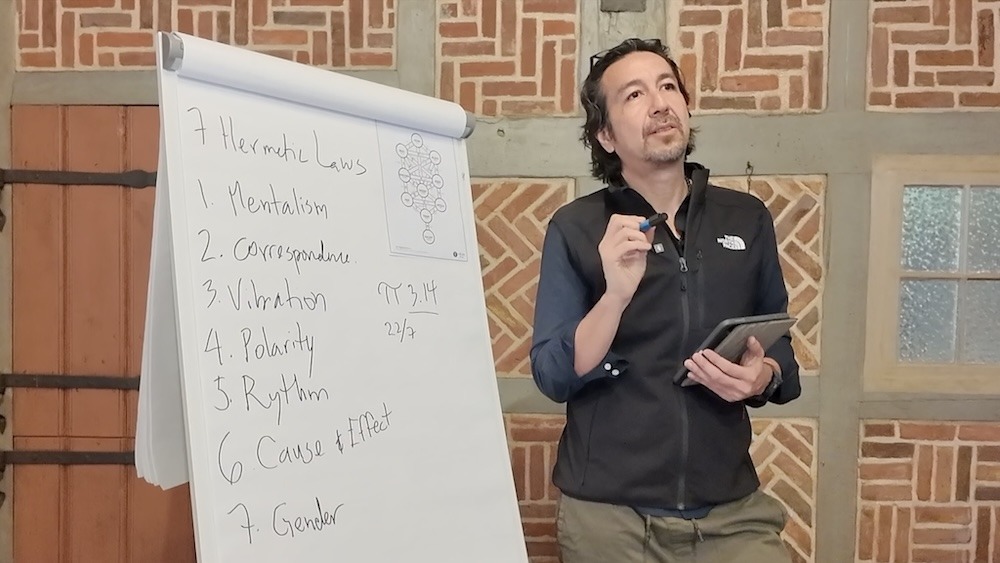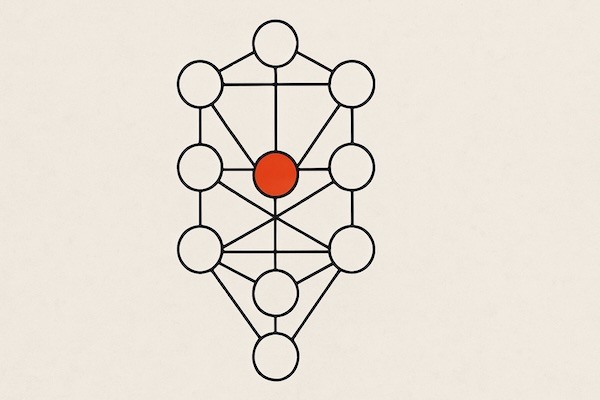In the September School in Hamburg we went over the interesting topic of the relationship of Sacred Geometry with human psyche. In this article, I will summarize the content of that class and go over the most important topics of this lecture.
When we look back at the origins of geometry in Ancient Greece, we see that figures like Pythagoras and Euclid were not simply preoccupied with abstract mathematics. For them, geometry was a language for understanding the fabric of existence itself. The dot, line, triangle, and polygon were not just shapes to measure, but symbols of the universe’s unfolding — a map of how order emerges from chaos.
In psychology, we can use these same principles to reflect on the patterns of the mind and the structures of healing. This is something that Jung studied, connecting the relationship of the psyche with symbolic dimensions. Archetypes, mandalas, and the fractality of the self. Jung anticipated ideas that resonate with fractal psychology: the psyche expresses itself in self-similar patterns at different levels (dreams, myths, personal symptoms).
The Fractality of Self
When we think about the mind, we often imagine it as a collection of separate parts: memories, emotions, thoughts, and beliefs. But there is another way to see it—through the lens of fractals. Fractals are patterns that repeat themselves at different scales, endlessly unfolding in both nature and consciousness. One of the clearest examples is the Sierpiński Triangle, a simple geometric figure that reveals profound truths about the psyche.
What Is the Sierpiński Triangle?
In the September school in Hamburg I introduced the Sierpiński Triangle, a fractal that has a basic geometric structure that can be understood very easily. starts with a single equilateral triangle. By dividing it into four smaller ones and removing the center, a new pattern emerges. Repeating this process infinitely creates a shape full of voids yet infinitely structured. Its area tends toward zero, but its outline becomes infinitely complex.
This paradox mirrors the psyche:
• What looks like emptiness often holds meaning.
• The more we break things down, the more structure we find.
• Small parts always echo the whole.
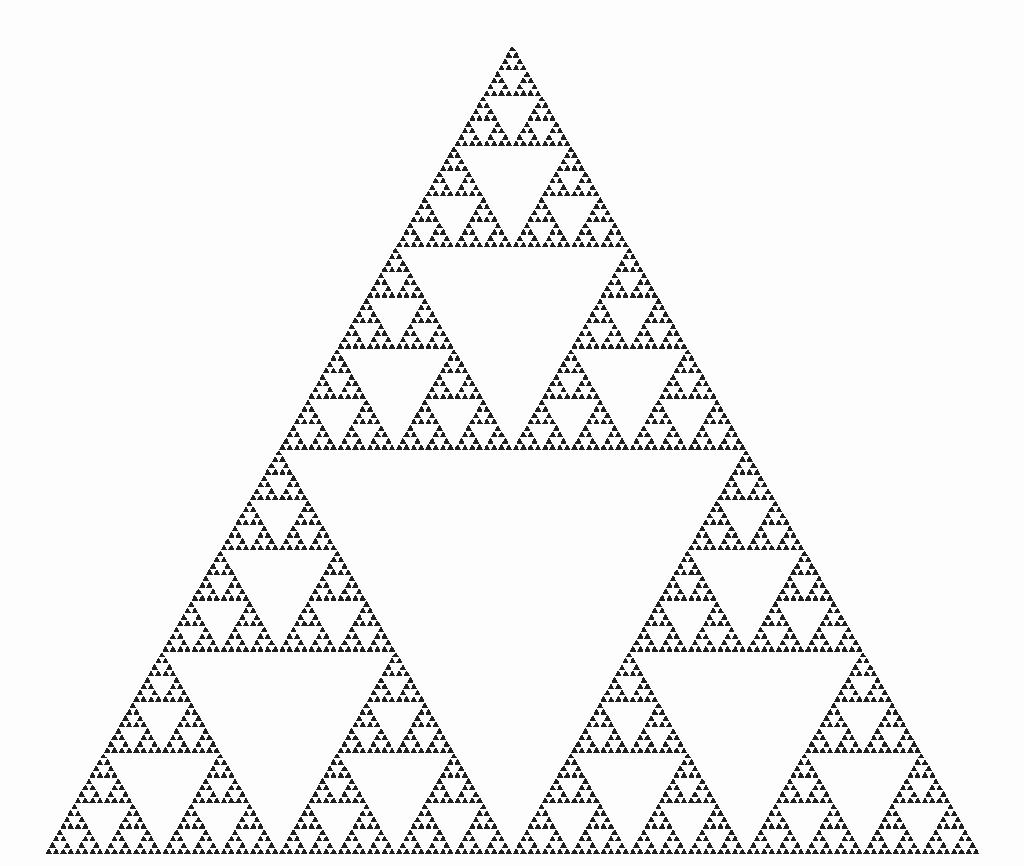
The Psyche as a Fractal
Like the Sierpiński Triangle, the human psyche is self-similar. Small experiences often mirror larger life themes. A passing emotional reaction can reveal a repeating pattern of relationships or even an intergenerational echo of trauma.
Traumas in particular behave like fractals. A core wound—the “large triangle”—fragments into countless smaller expressions: triggers, habits, defensive parts, and relational dynamics. Each piece carries the imprint of the whole wound .
This explains why, in integration or psychotherapy, working on one small fragment of the psyche can bring healing across wider dimensions of experience. By shifting one triangle, the entire pattern reorganizes.
Fractals in Sacred Geometry and Culture
- Across cultures, sacred geometry has encoded this fractal principle:
- The Flower of Life, chiseled in stone thousands of years ago, resembles DNA viewed from above.
- Snowflakes, seashells, ferns, and honeycombs display symmetry and harmony—the language of sacred order.
- Temples such as the Taj Mahal or Alhambra were built with divine proportions (the golden ratio), transmitting unconscious states of calm and coherence to those who enter.
- In Peru, the Inca Chakana symbolizes the three worlds (underworld, earthly, and upper world) and encodes time, direction, and spirit in a single fractal form.
- The Shipibo-Conibo people weave fractal patterns into textiles and beadwork that also correspond to the melodies of icaros—medicine songs sung in ayahuasca ceremonies. These geometries, when sung, become sound; when seen, become vision; when felt, become healing.
These cultural expressions reflect a truth: the psyche is fractal, and art, architecture, and ritual are mirrors of its geometry.
Shipibo singing Icaros to a Shipibo cloth
Fractals and States of Mind
The fractality of the psyche also explains why mental states oscillate between order and chaos:
- Healthy thoughts and emotions resemble ordered fractals, like a mandala: harmonious, symmetrical, and balanced.
- Disordered states such as depression, anxiety, or ADHD resemble chaotic fractals—random, fragmented, without clear structure.
Experiments such as Masaru Emoto’s water crystal studies suggest that intention and words can alter the organization of matter. Similarly, in the psyche, intention, love, and conscious awareness can bring coherence to inner chaos.
Neurofeedback research confirms this: in ADHD, neurons fire chaotically; after training, brain activity becomes ordered and harmonious. Meditation, entheogens, sacred geometry, and therapeutic practices can achieve similar results, guiding the brain toward coherence.
Healing as Iteration
Just as the Sierpiński Triangle is built step by step, healing unfolds iteratively. Each return to a memory, pattern, or wound allows new understanding, gradually weaving coherence into the psyche. Integration is not a single breakthrough but a fractal process: recursive, layered, and endlessly unfolding.
Love as the Self-Organizing Force
Underlying fractals is the mystery of self-organization. The universe does not collapse entirely into entropy; it also organizes into galaxies, rivers, forests, and minds. This self-organizing force, described in traditions from Hinduism (Vishnu and Shiva) to modern physics, can also be understood as love .
Love here is not only emotion but the cosmic principle that sustains life, resists entropy, and brings order to chaos. When we align our psyche with love, we participate in this universal fractality of creation.
Conclusion
The fractality of the psyche is more than a metaphor—it is a key to integration. Every part reflects the whole. Every trauma echoes across generations. Every vision of geometry in ceremony is a glimpse of the universal blueprint that also shapes our inner world.
The Sierpiński Triangle, the Flower of Life, and mandalas remind us that order emerges from chaos, and that healing comes from recognizing the repeating patterns within ourselves. By learning to see our psyche as fractal, we discover that even our wounds, our voids, and our repetitions are part of a larger, meaningful design.

